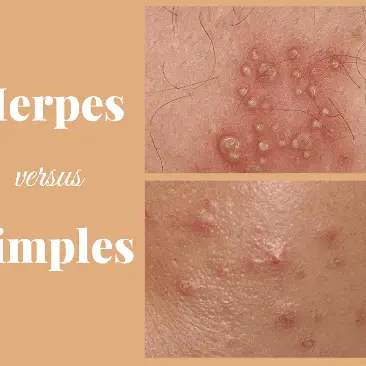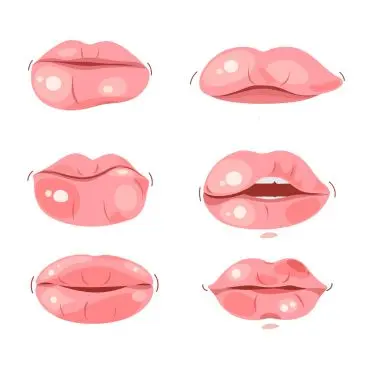Is TRT Right For Your Partner? A Comprehensive Guide For Women
Low libido, or low sex drive, can hurt relationships. When one partner doesn't feel like having sex, it can lead to feelings of frustration and misunderstanding. This problem is more common than many people realise and can be caused by things like stress, lifestyle changes, and health issues. One primary reason for low libido in men is low testosterone levels. Understanding this problem and finding ways to fix it to keep the relationship healthy and happy is essential.
Recently, Testosterone Replacement Therapy (TRT) has become a popular solution for men with low testosterone, a condition also known as hypogonadism. TRT helps bring testosterone levels back to normal, which can improve low sex drive, tiredness, and mood swings. For many couples, looking into TRT can be a hopeful step toward bringing back intimacy and connection. This guide will help women understand what TRT is, its benefits and risks, and how to support their partners through it. By learning more about TRT, women can make better decisions with their partners and strengthen their relationships.
Signs of Low Testosterone in Men
Low testosterone can affect men in many ways, impacting their physical health, emotions, and sexual performance. Recognising these signs can help you understand if your partner might be experiencing low testosterone levels and if TRT could be a solution. Below is a checklist of common symptoms to look out for in your partner.
Physical Symptoms:
Low testosterone can cause noticeable physical changes. Your partner might always feel tired, even after a good night's sleep, and they might gain weight, especially around their belly. They could also lose muscle strength and see more hair loss. These physical changes can be upsetting and affect their overall confidence and well-being.
Emotional Symptoms:
Emotionally, low testosterone can make a big difference, too. You might notice your partner feeling more depressed or down than usual. They may become irritated easily and experience frequent mood swings. These emotional symptoms can be challenging for relationships, so discussing them with care and understanding is crucial.
Sexual Symptoms:
Sexually, low testosterone often has apparent effects. A lower interest in sex is a common sign. Your partner might also have trouble with erections or not have as many spontaneous erections as before. These issues can affect their self-esteem and their intimate relationships. Recognising these signs and talking about them can help you understand and support your partner better.
Checklist
Here is a checklist to help you identify potential low testosterone in your partner:
- Is your partner often tired?
- Have they gained weight recently?
- Do they seem to have less muscle than before?
- Are they losing hair?
- Do they seem more depressed or irritable?
- Do their moods change often?
- Has their interest in sex decreased?
- Are they having trouble with erections or experiencing fewer spontaneous erections?
If you notice several of these symptoms in your partner, it might be worth talking to a doctor about the possibility of low testosterone. Early detection and treatment can significantly improve your partner's quality of life and relationship.
How Low Testosterone is Diagnosed
If you notice several of these symptoms in your partner, it might be worth talking to a healthcare professional about the possibility of low testosterone. Here’s what the TRT (Testosterone Replacement Therapy) evaluation process usually involves:
- Medical History: The first step is discussing your partner’s medical history with a healthcare provider. This is very important because it helps the doctor understand any health issues, medications, or lifestyle factors that might be causing low testosterone. The doctor will ask about symptoms, overall health, and any family history of hormone problems. Being open and honest during this talk will help the doctor make an accurate diagnosis and treatment plan.
- Examination: During a physical exam, the doctor will look for physical signs of low testosterone. This might include checking your partner’s muscle mass, body fat, and hair loss. The doctor may also examine the testicles to see if they look and feel normal. This exam gives the doctor more clues to confirm if low testosterone is the issue.
- Blood Tests: Blood tests are essential for diagnosing low testosterone. The doctor will order blood tests to measure testosterone levels and other hormones. These tests are usually done in the morning when testosterone levels are highest. The doctor might also check other markers, such as luteinizing hormone (LH) and follicle-stimulating hormone (FSH), to better understand your partner's hormone health. These blood tests are crucial for accurately diagnosing and deciding the best treatment.
Going through this evaluation process with a healthcare professional will help determine if TRT is the right option for your partner. The doctor can create a treatment plan to improve your partner’s health and relationship by understanding their medical history, physical condition, and hormone levels.
TRT Benefits and Risks Explained
Testosterone Replacement Therapy (TRT) can help men with low testosterone, but it also has some risks. It's essential to understand the benefits and drawbacks of TRT before deciding if it’s the right choice.
- Libido And Sexual Health: TRT can increase sex drive and improve sexual function. Men often feel a significant boost in their desire for sex and find it easier to get and keep an erection. This can lead to a more satisfying and happy sex life, which is good for the relationship.
- Mood and Energy: TRT can make a big difference in how a man feels emotionally and physically. Many men feel less depressed and irritable, and their moods become more stable. They also have more energy, which helps them feel motivated and active in their daily lives.
- Physical Health: TRT can improve physical health by increasing muscle mass and strength, making it easier to stay fit. It can also strengthen bones, reducing the risk of fractures. These changes can help men live a healthier and more active lifestyle.
- Risks and Side Effects: While TRT has many benefits, it has some risks and side effects. Some men might get acne or have oily skin, and TRT can make sleep apnea worse. Breast enlargement can also happen, which can be uncomfortable. TRT can increase the red blood cell count, which might lead to blood clots. There are also risks of heart problems, like heart attacks or strokes. Discussing these risks with a doctor is essential to determine if TRT is the right choice for your partner.
Alternatives to Testosterone Therapy
If you or your partner is looking for alternatives to Testosterone Replacement Therapy (TRT), several options might help improve low testosterone levels. These include lifestyle changes, natural supplements, and other medical treatments. Exploring these options can help manage symptoms and improve overall well-being.
- Lifestyle Changes: Making healthy lifestyle changes can help boost testosterone levels. Eating a balanced diet with lots of nutrients, exercising regularly, managing stress with relaxation techniques, and getting enough sleep are all important. These changes can increase energy, improve mood, and support overall health, which can help raise testosterone levels.
- Natural Supplements: Some natural supplements may help increase testosterone levels. Vitamins and minerals like vitamin D, zinc, and magnesium are essential for making hormones. Herbal supplements such as fenugreek, ashwagandha, and Tribulus Terrestris are also believed to help boost testosterone. However, talking to a doctor before starting new supplements is essential to ensure they're safe and effective.
- Other Medical Treatments: Other medical treatments besides TRT might help with low testosterone. These can include medications that help the body produce more testosterone or address specific problems like erectile dysfunction. Other hormone therapies, like clomiphene citrate, might also be options. Talking to a doctor can help you find the best treatment plan for your partner.
Exploring these alternatives can provide different ways to address low testosterone and improve overall health. Discussing these options with a healthcare provider is essential to finding the most suitable approach for your partner.
TRT vs Alternatives: What’s the Difference?
| Option | What It Involves | Benefits | Considerations |
|---|---|---|---|
| TRT | Prescription testosterone therapy | Boosts libido, energy, mood, muscle mass | Requires monitoring, fertility risks |
| Lifestyle Changes | Diet, exercise, sleep, stress control | Natural, improves overall health | Results take longer, may not fully correct deficiency |
| Supplements | Vitamin D, zinc, ashwagandha, fenugreek | May support hormone health | Effectiveness varies, safety not always proven |
| Other Medical Treatments | Clomiphene, ED medications | Improves symptoms without lowering sperm | Needs specialist oversight |
How to Talk About TRT With Your Partner
Talking about low testosterone and TRT can be a sensitive topic, but starting the conversation is an essential step towards finding a solution. Here are some tips on how to discuss this with your partner in a caring and effective manner.
- Choosing The Right Time And Setting: Choose a calm and private time to talk about low testosterone. Avoid busy or stressful moments. A relaxed setting can make the conversation more comfortable and less pressured for both of you.
- Presenting Information: Share information about TRT in a supportive and non-judgmental way. Use simple language and focus on how TRT could improve their quality of life. Make sure they feel understood and not criticised.
- Encouraging Professional Help: Emphasise the importance of consulting with a healthcare provider for a proper diagnosis and treatment plan. Remind them that a professional can offer the best advice and support tailored to their needs.
TRT Monitoring and Long-Term Care
- Regular Check-Ups: Regular doctor visits are crucial for anyone undergoing TRT. These check-ups help monitor testosterone levels and ensure the treatment is working effectively. The doctor can adjust the dosage as needed to keep testosterone levels in a healthy range.
- Managing Side Effects: TRT values managing potential side effects. Tips for dealing with side effects include maintaining a healthy lifestyle and keeping track of any new symptoms. If side effects become bothersome or severe, it's essential to seek medical advice immediately.
- Long-Term Commitment: TRT often requires ongoing treatment and lifestyle adjustments. This means committing to regular follow-ups, maintaining a healthy diet, exercising, and managing stress. Understanding that TRT is a long-term commitment can help set realistic expectations for the treatment process.
Final Thoughts: Supporting Your Partner on TRT
In this article, we've covered the signs of low testosterone, the TRT evaluation process, the benefits and risks of TRT, alternatives to TRT, initiating the conversation, and the importance of monitoring and adjusting TRT. You can help your partner improve their quality of life by approaching the topic with empathy and support. Remember, addressing low testosterone can positively impact your relationship, leading to a healthier and happier future. If you need more information, please don't hesitate to contact Mobi Doctor.






